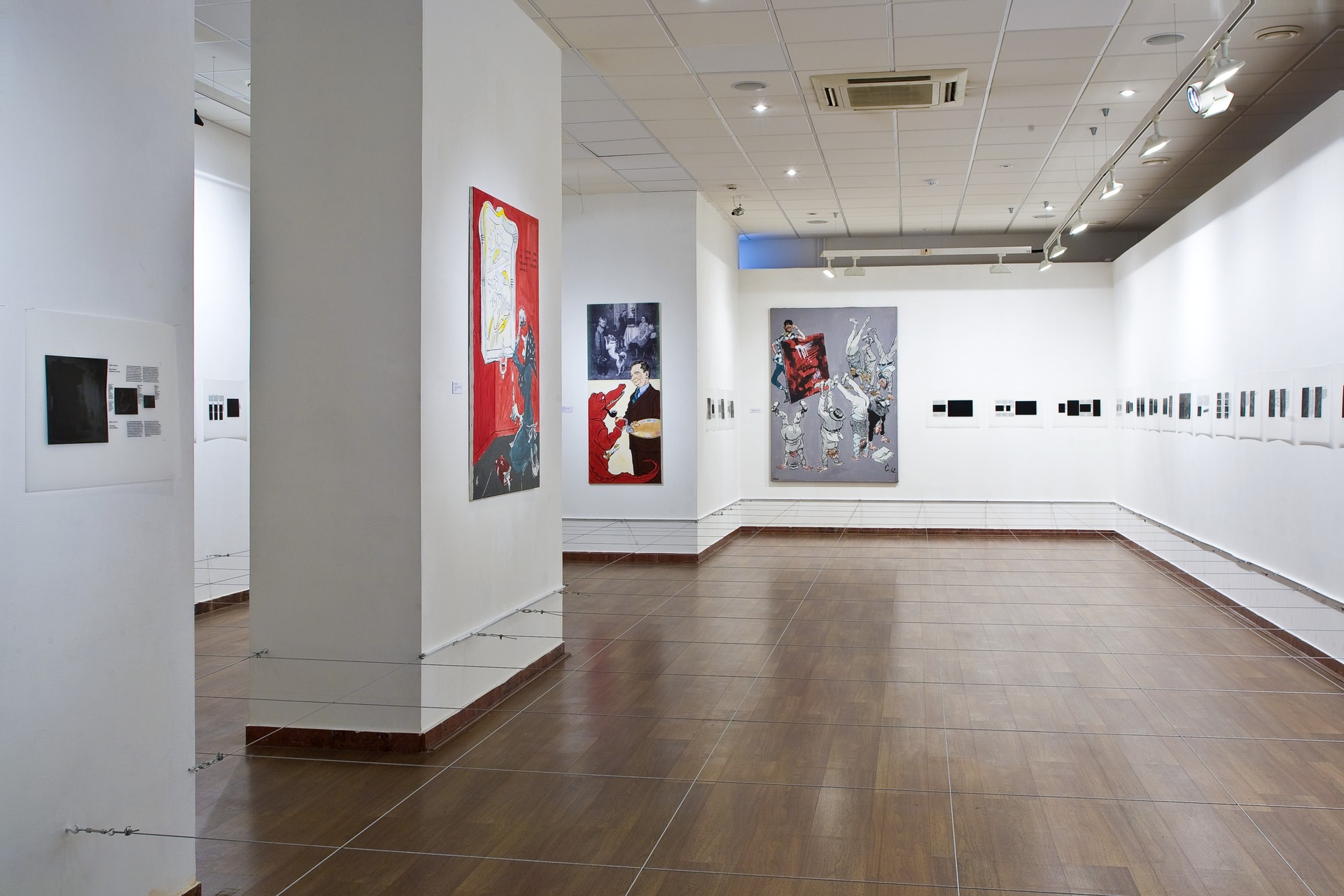
Yuri Albert’s exhibition features the traditional set of artifacts. Just as the title has it, this includes painting, sculpture and graphics. However, these are not the sort of “painting-sculpture-graphics” that lovers of art used to feast their eyes on during the Communist times. The role of painting in this artist’s work is taken by a number of oil paintings, larger-than-life replicas of Soviet caricatures of the Modernist artists’ outrages. Albert’s idea of graphics amounts to a large series of sheets with meticulously precise drawings of his own catalogues. As for sculpture, it is represented by wire netting spread out above the floor which symbolizes, in its outline, an average work by the great minimalist artist Carl Andre.
The art of Yuri Albert, one of the most consistent among Russian conceptualists, is, by his own statement, is a continuation of the tradition of the legendary Art & Language group. Accordingly, Albert is engaged not as much in creating works of art as making significant gestures directed towards art. These gestures, it has to be said, appear very much like art objects themselves. Or like statements about art. Or the reproduction / transformation of objects, connotations and formulae related to art, to the local and the international art-systems and to particular aspects of the way they function.
In other words, the artist’s work in the course of over a quarter of a century, amounts to reflections on art put in a box labelled “Art”. When Albert was just starting his career, such behaviour and mindset were regarded (especially in the USSR setting) as wildly radical. Nowadays, however, everything is different. Everything, be it natural or man-made, only reaches our perception together with a description and an interpretation. This is why Albert’s method of “thought-practice” grew to be natural not only for the artist but for every thinking person.
However, it is not only a question of the effects of thinking, but also of the feelings that accompany it, the crucial one among them being the irony. Irony has formed (with only a few, if significant, exceptions) the very method of aesthetic behavior characteristic of the Moscow conceptualists. It is responsible for the necessary distance (essential, as we all know, to intellectual reflection) in relation to the material of such practice. Further, irony presents its object in a comic light, thereby making it, on the one hand, suggestively interesting and, on the other, no longer scary or alienated. Thus, paradoxically, irony reduces the distance. With apparent inconsistence, it estranges its object, while at the same time making it seem nearer. In this light, it appears not only as a function of thought but also as a manifestation of love or, to be precise, a fine balance of the two.
Coming back to Yuri Albert, one could reasonably say that nearly everything in his work stems from the love of art itself. The kind of love that is so characteristic of the timid intellectual of Soviet extraction, for whom the words “I love” seem vulgar, and the prospect of having to play the role of the romantic lover — even more so. Thus, it would be naïve to expect any direct expression of him, just as it would be unbearable for him to suddenly create something from the first person, assuming the title of an Artist. But a more modest role may be acceptable. For example, you could say that you love art (and that is very important). But you also love your friends, and another kind of art, distant, different, old art, the Reality that was there before you and that is no longer possible. And this is why you also love everything to do with art. It doesn’t matter whether it belongs to the past or to the present: after all, it is all, at least to a certain degree, art. In which case, you are also, logically enough, an artist.
This roundabout way is the only explanation. Outside the context of the culture Yuri Albert, by virtue of his generation, belongs to, and which is now perceived as openly old-fashioned, Soviet caricatures, whatever the scale they are drawn at, are little better than camp. The copies of catalogue pages are merely tedious labour that has nothing to do with creativity. As for the homage paid in the form of wire netting, this is but a ridiculous and annoying obstacle on the audience’s way to the other exhibits — nothing like a metaphor of that special aesthetic love that endures literally anything.
Vladimir Levashov